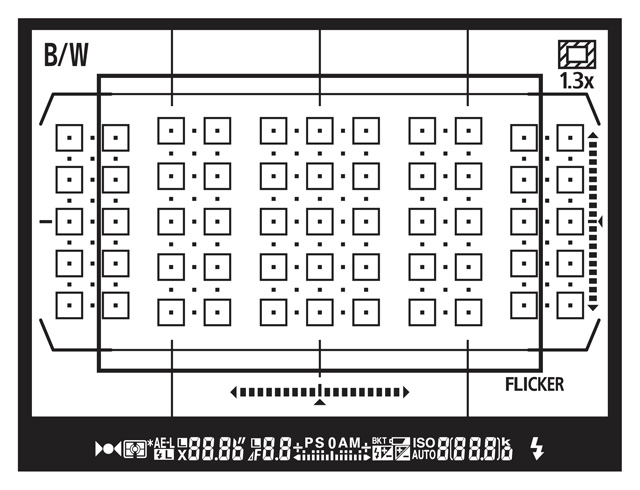Field Review: Nikon D500
Wetpixel Field Review: Nikon D500
ISO performance
Traditionally, one of the advantages of FX cameras has been their low light (high ISO) performance. Certainly, the D5 offers amazing clean images at ISO levels that would simply not have been possible with the D3.
It is important to remember that the D2Xs, Nikon’s pro camera announced in 2006, featured a then state of the art DX sensor. In use, the maximum ISO possible with it was around 400.
10 years later, the D500 is competent to at least ISO 2000, with clean images still possible beyond this, especially after processing through Lightroom’s noise reduction.
Unlike the D800 series cameras, ISO performance on the D500 is not linear.
With digital cameras, ISO is not strictly speaking an exposure adjustment. To elaborate, it does not affect the number of photons hitting the sensor like both aperture and shutter speed do. ISO is a form of variable gain that is applied to the data collected by the sensor, effectively boosting the voltage of the signal from it. This is then fed into the analog to digital converter (on the sensor in the D500’s case) and is stored as a number that is recorded in the raw image data.
Manufacturers can apply “tweaks” to this process. The D5, for example, actually performs “worse” at base ISO than it does at higher ISO levels. This is by design, as the usage design characteristics of the camera are for exceptional low light performance.
The D500’s sensor is a dual gain version, which provides a less linear ISO response up to ISO 400, where the second gain step kicks in and provides a more linear approach. In testing, the camera is actually slightly outperformed by the D7200 at base ISO, but rapidly outperforms it once ISO levels are increased. Above ISO 400, this becomes particularly marked.
Autofocus
Nikon has introduced a new autofocus system (AF) for the D5 and D500 cameras. It consists of the Multi-CAM 20K AF sensor, located at the bottom of the camera facing towards the camera’s secondary mirror and a dedicated CPU that processes only AF data.
The sensor has been entirely redesigned to offer 153 phase detection sensor points, improved low light performance and increased actual focus sensing area. 99 of theses points are cross-hatched, the increased number allows for a wider detection range that extends virtually to the edges of the DX frame and Nikon claim that the system is accurate down to -4EV.
The dedicated CPU processes only AF data. This is designed to increase speed and accuracy.
Nikon also uses what it calls its Scene Recognition System to analyze AF data. This brings together data from the camera’s metering system, imaging sensor, AF sensor and camera/lens settings. For example, the camera’s metering sensor is largely responsible for color information, which is used to allow focus tracking in the camera’s 3D tracking mode. The D500 is equipped with a new dedicated 180,000-pixel metering sensor, which means that the Scene Recognition System should be more accurate too.

The 153 focus points fill the entire viewfinder, effectively allowing focus tracking or selection anywhere within the frame. 99 of these points are cross type (detect movement both vertically and horizontally) of which 55 are selectable by the user.
Exceptions to this are the 12-24mm f/4G DX and 60mm f/2.8G lenses, both of which reduce the number of active cross sensors to 63, and when a teleconverter is used.
AF shooting modes are a matter of personal preference to some extent, and I tend to use Continuous AF (AF-C) in either 3D or 153 point Dynamic area focusing area mode. 3D Tracking uses color information from the camera’s Scene Recognition System to track the subject around the frame. It does take a “leap of faith” to trust it, but it is almost infallible.
My experience is that the D500’s AF performance is simply the best that I have ever used. With 3D tracking, following reef fish’s movements around the frame is almost “too easy”. It simply does not miss. Of the nearly 8,000 images shot for this review, there is no more than 20 that are definitely out of focus. This should be tempered however with the knowledge that not all of those remaining are focused exactly on where I wanted to. However until the camera can read my mind, this is user error not camera error!
I have found that newer AF systems are more accurate than my eye and in situations where they fail (the complete darkness inside a wreck for example) locking off the autofocus at a known distance in the light zone prior to entering the darkness is a viable technique. With super macro lens attachments, the AF is racked in to its closest focus and then sharpness achieved by rocking the whole camera in and out.
It may be contentious, but I cannot see of a need for manual focus with this camera (unless the chosen lens does not allow for AF) underwater.
- Introduction and Acknowledgements.
- Image Quality and Dynamic Range.
- ISO Performance and Autofocus.
- XQD Cards, Build, Controls and Power and Speed.
- Alex Mustard on the D500 and Conclusion.